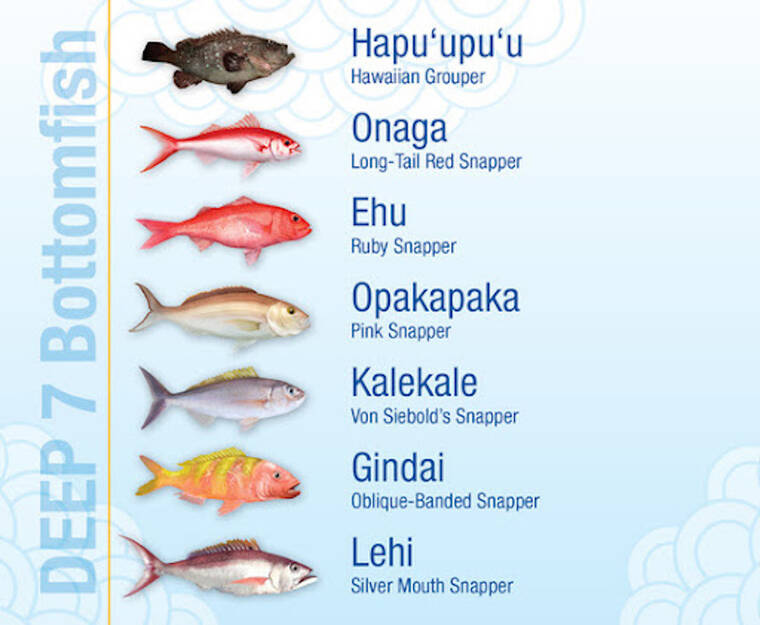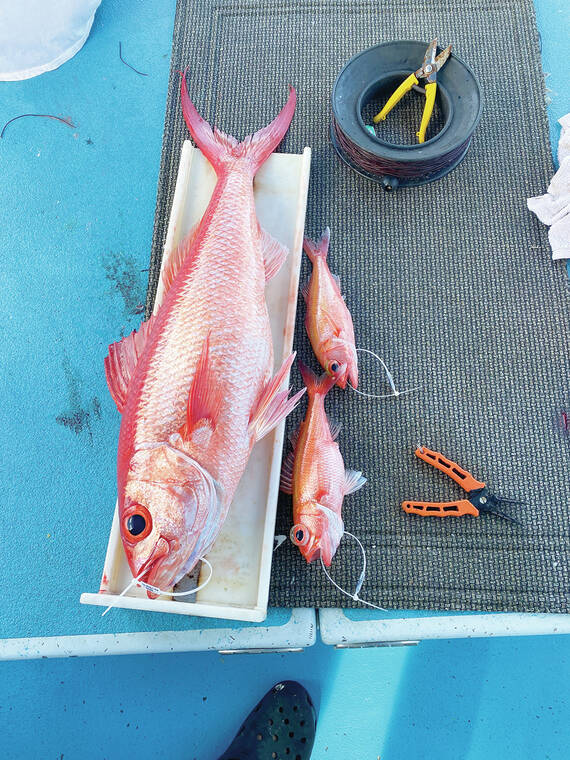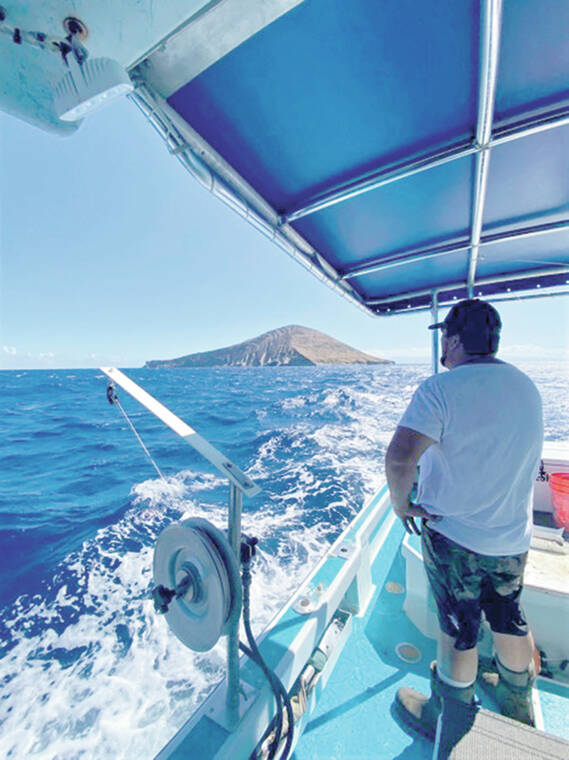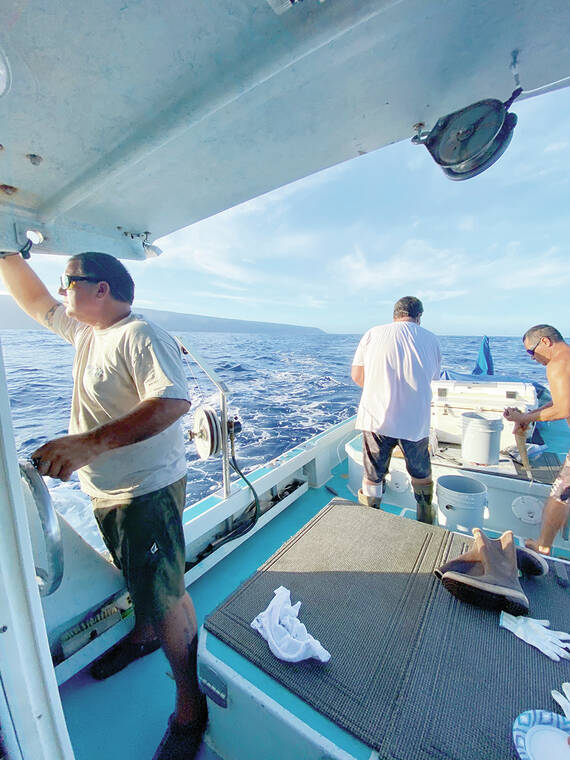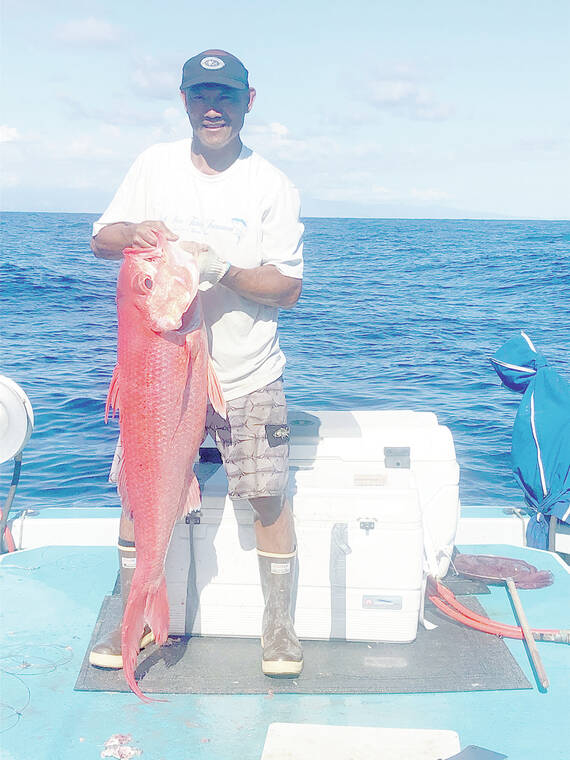LIHU‘E — A decade after teaming up, Hawai‘i fishers and federal researchers are days away from completing their annual survey of the Deep Seven, some of the most culturally important and challenging fish to catch in the state.
The ongoing project is called the Bottomfish Fishery Independent Survey (BFISH). It started in the mid-2000s when the National Oceanic and Atmospheric Administration met with the state’s fishing community to rectify biased data-collection methods for stock assessments, which ultimately inform management policies.
The two groups launched their joint venture in 2011, going fully operational in 2016.
“Our goal is the same as that of the fishermen,” Ben Richards, lead survey scientist for the NOAA Pacific Islands Fisheries Science Center, said in a recent interview. “We would like to do everything that we can to help ensure the sustainability of the Deep Seven stock for fishers, their children, their grandchildren, for generations to come.”
The Deep Seven designation encompasses the six snappers and one grouper most-frequently caught by bottom fishers in Hawai‘i.
These species include ehu, or squirrelfish snapper (Etelis carbunculus); gindai, or Brigham’s snapper (Pristipomoides zonatu); hapu‘upu‘u, or Seale’s snapper or Hawaiian grouper (Hyporthodus quernus); kalekale, or Von Siebold’s snapper (Pristipomoides sieboldii); lehi, or silverjaw snapper (Aphareus rutilans); onaga, or longtail snapper (Etelis coruscan); and ‘opakapaka, or pink snapper (Pristipomoides filamentosus).
Each member of the Deep Seven lives far below the Pacific’s surface. Relatively few fishers can catch enough to operate on a commercial level.
“These fish exist generally at depths between 75 and 400 meters. The standard fishing tackle is one main line with four to six branching lines and hooks going out,” Richards said. “Trying to keep that from tangling up 1,200 feet down with different surface currents and bottom currents — it’s an incredibly challenging fishery to fish well.”
But the Deep Seven’s primary value isn’t monetary. The colorful animals, many of which sport stunning scarlet scales, have become a part of Hawai‘i’s multicultural tradition. Red fish is served on New Year’s, certain birthdays, weddings, in times of illness and more.
“It’s huge,” said Clay Tam of the nonprofit Pacific Islands Fisheries Group, when describing the bottomfishes’ role in island life.
Tam is a key player in the BFISH undertaking. PIFG helped build a trusting relationship between fishers and scientists at the project’s onset, and now contracts the fishing vessels responsible for conducting the survey. According to Richards, each is the other’s right-hand man.
“Our motto has always been, ‘fishermen should be part of the solution, not part of the problem,’” Tam told The Garden Island. “Therein lies our community work … as you can see with the bottomfish, bringing fishermen and the science guys to the table. I think you have the real, true stakeholders and those who are responsible for managing it in the same place.”
F/V Yukie-Lynn
NOAA and PIFG rely on the captain and crew of F/V Yukie-Lynn to perform the BFISH around Kaua‘i and Ni‘ihau.
Tam holds the boat, helmed by Kevin De Silva of Kapa‘a, in high esteem.
“He’s been very diligent, reliable. He gets out there and goes to work,” Tam said. “Not everybody is cut out for this kind of work, in terms of science, because there’s a lot of responsibility in terms of reporting accurately and whatnot.”
The survey also demands consummate seamanship, as well as scientific aptitude. Some BFISH contractors may cruise the ocean for days at a time, fishing randomly selected 500-by-500-meter cells on a statewide grid designed by NOAA Fisheries personnel. This year, at least one BFISH vessel combed the sea for two weeks straight.
De Silva, who also works with PIFG to conduct ahi (Thunnus albacares) research, is soft-spoken and self-effacing. He shrugged off his scientific work when approached by The Garden Island, but admitted a fondness for the NOAA survey that has led the Yukie-Lynn to many fine fish, which are kept for study by NOAA researchers or donated to kapuna in need.
One crewmember, Marvin Lum, broke a state record when he caught a 34.3-pound onaga during one 30-minute survey session, according to De Silva.
The Yukie-Lynn fished its final BFISH cell of 2021 weeks ago. The survey is now is 96% complete, and on Friday Richards reported two days of good weather are needed to finish the job statewide.
Years of BFISH data, collected by fishers and crunched by scientists, indicate the Deep Seven stock is currently not overfished or experiencing overfishing.
However, questions still swirl around the fish, whose life histories remain relatively mysterious. Underwater cameras and body measurements, otoliths (ear bones) and gonads taken from BFISH specimens provide answers.
The implications of climate change are also top of mind for BFISH surveyors, who now attach thermometers to their tackle for yet another data point.
Richards and Tam believe scientists and fishermen must continue to work closely if either group is to navigate these uncharted waters successfully.
“It has been a partnership from the very beginning, and that’s been incredibly important,” Richards explained, noting fishers eliminate survey scientists’ blind spots.
“We haven’t been here for generations, we don’t know the cultural history. We haven’t been out on the water day in, day out, in every different weather condition,” Richards concluded. “… This is not something where Big Brother is coming in and saying, ‘We know what the fish is and this is what it’s doing.’ It’s, ‘Hey, we’ve all collected this data together. And this is what it says.’”
In addition to De Silva and the Yukie-Lynn, this year’s BFISH vessels and captains hail from O‘ahu, Maui and Hawai‘i Island.
•••
Scott Yunker, reporter, can be reached at 245-0437 or syunker@thegardenisland.com.
